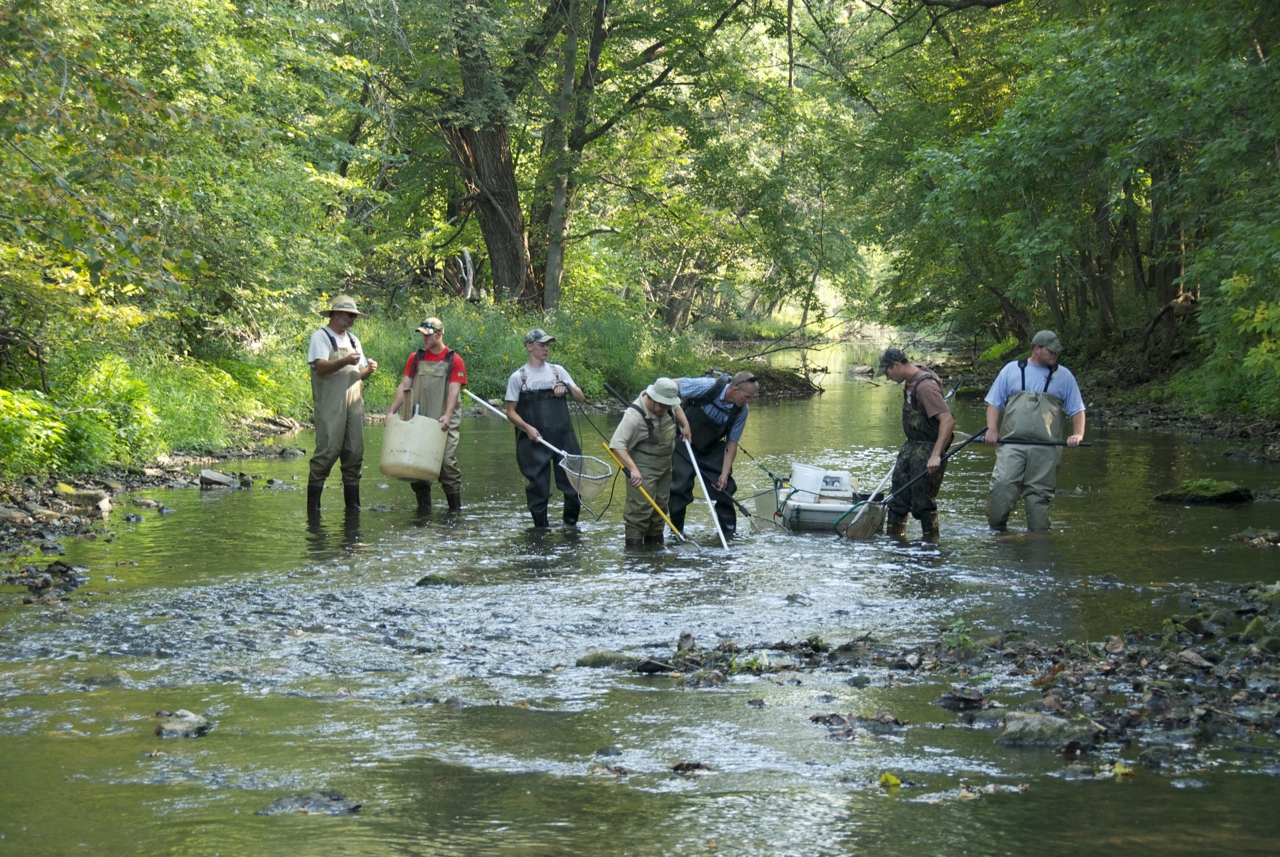Cedar River Watershed Project: Cedar River Aquatic Life
By Taylor on March 22, 2013 in Blog

Written by Larry Stone
“The Cedar is, in my judgment, the finest stream in Iowa,” wrote pioneering ichthyologist Seth B. Meek, when he surveyed the Cedar River in the late 1800s. He cited the swift current, prairies and woodlands in the watershed, many tributaries and springs, backwaters and bayous, and abundant fish.
Iowa State University fisheries biologist Bruce Menzel, in “Iowa Fish and Fishing,” echoed Meek's praise. He said the large, diverse Cedar basin contained more fish species (106) than any other river system in Iowa.
But even before 1900, Meek warned of threats to the Cedar from urban and agricultural development.
“You have in the Cedar a beautiful stream,” Meek wrote. “Protect (it) as far as possible from pollution, and protect your fishes from wholesale slaughter . . . and you will be amply rewarded.”
We've only partly heeded that advice, said Chad Dolan, a fisheries biologist for the Iowa Department of Natural Resources (DNR).
“The (lower) Cedar River was probably never a crystal clear river,” Dolan said. With intensive farming and urban development, sediment and nutrients have increased the turbidity and stimulated plankton growth in the river. Sediment has buried rock riffles, covering critical habitat for fish, crayfish and aquatic insects.
Instead of walleyes and smallmouth bass, the lower reaches of the river now favor catfish and bullheads. Minnows that can't survive in murky water also have disappeared.
Channelization has changed fish habitat, Dolan said. “You get heavy rains and the water is taken from the landscape via these channelized streams and injected into the Cedar.”
The river has lost backwaters and oxbows, which fish need for spawning, wintering, feeding, and nursery habitat. “Our tendency has been to drain them,” Dolan said. “If we've left them, they've filled in due to poor land use.”
Sediment, turbid water, heavy flows, and bank erosion also reduce stream vegetation, Dolan said. “Fish rely on plants for cover and areas to feed and spawn,” he said. “But those areas are gone.”
Despite that gloomy assessment, Dolan remains hopeful. Some stream changes could be reversed with proper management. He cited farmers who install buffers, enroll land in the Conservation Reserve Program, or use contouring, prairie strips, or cover crops to reduce erosion. Urbanites are experimenting with permeable pavement, rain gardens, and other ways to reduce runoff. Restoration projects have put meanders and riffles back into channelized streams.
“We're becoming more aware of our land use practices,” Dolan said. “We're not continuing to make the same mistakes we did in the past.” As habitat and water quality improve, the diversity of aquatic life will rebound, he predicted.
That diversity once included countless mussels, said Scott Gritters, a DNR mussel specialist. But mussels have been hurt by cumulative effects: “dams . . . siltation . . . channel changes . . . going through big cities.”
Dams block fish movement – and mussels' life cycles require their larvae to attach to the gills of fish. Siltation can smother mussels. Chemicals – from agriculture, industry or homeowners – can poison mussels.
Fortunately, there may be habitat where mussels could be restored, Gritters said. Perhaps they were wiped out by pollution, but water quality has improved. Changes in dams, or high water – like the floods of 2008 – might allow fish to carry mussel larvae upstream again.
Bill Kalishek, DNR fisheries biologist on the upper Cedar, shared his colleagues' cautious optimism – especially about upstream segments. He cited Turtle Creek, in Mitchell County, where brown trout now reproduce after watershed improvements by landowners working with state and federal agencies.
In Rock Creek, near Osage, biologists found species such as the silver Redhorse, brook lamprey, and northern hogsucker that indicate good water quality and habitat. Sago pondweed has reappeared in the Cedar north of Floyd, after an absence of decades. “Seeing these plants tells me that our water quality, especially clarity, is probably improving,” Kalishek said.
Ironically, some of the conditions that stress fish, mussels, and other river organisms also make the Cedar and other Iowa rivers naturally fertile, Gritters said.
“They're so productive and so full of life . . .” Parts of the Cedar support paddlefish, shovelnose sturgeon, blue suckers, and other unusual fish, Gritters said. Biologists occasionally find uncommon mussels, such as elk toes or pistol grips.
“There's a lot of potential to restore all kinds of diversity, Gritters said. But the Cedar and other Iowa rivers remain near a “tipping point.” The health of the watershed may determine whether stream inhabitants disappear in a soup of sediment and chemicals – or whether Iowans will be “amply rewarded” with a river full of life and diversity.
Read other articles in this series.
—–
Originally published by the Cedar River Watershed Project
Learn more about watersheds and how you can protect them.